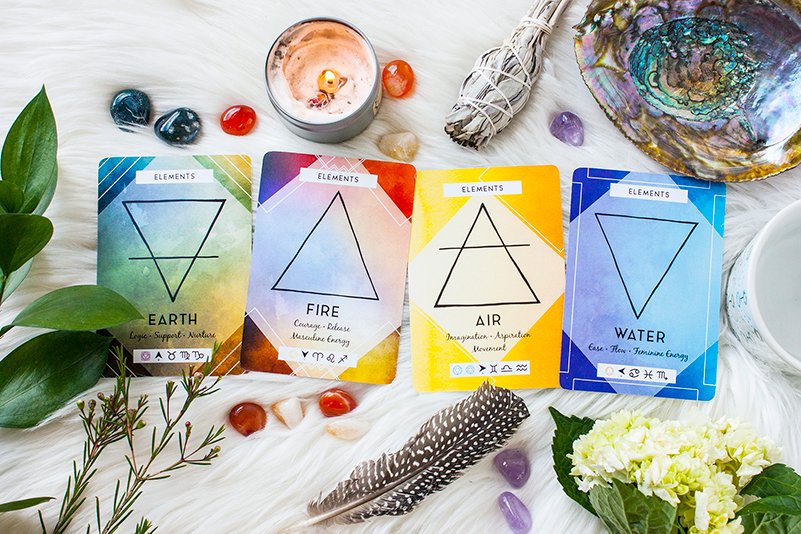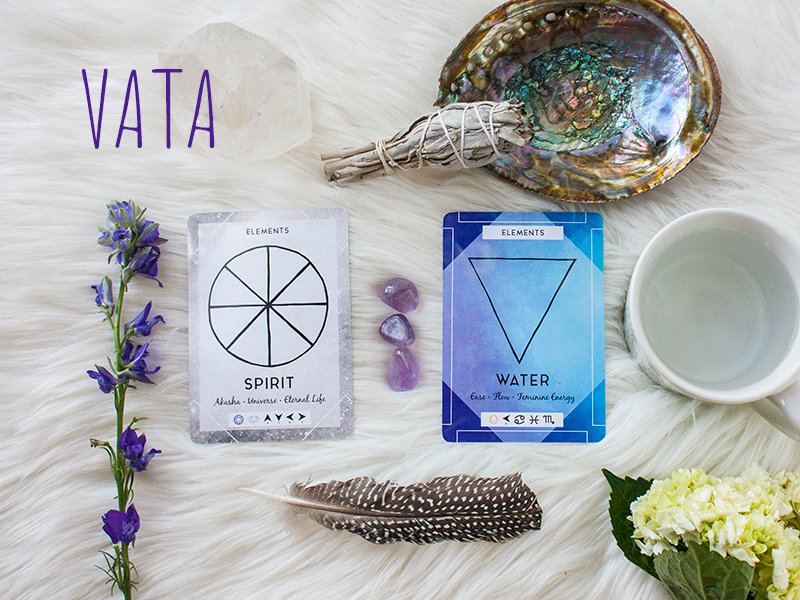What Are the Doshas & How to Determine Yours
Ayurveda is known as the sister science to yoga. It’s a traditional Hindu system of medicine developed in ancient India, based on holistic integration of mind and body for optimal balance and health.
The word literally translates to life science or knowledge, showing Ayurveda’s holistic approach to health. Unlike Western medicine, Ayurveda focuses on food and lifestyle, rather than medication, and prevention to help you get healthier before you get sick.
Ayurvedic Doshas
Doshas are the different types of energy in your body. Each dosha is associated with different elements and qualities, which I’ll get into below.
We’re each born with a specific dosha constitution, or makeup. We can learn a lot about what’s best for our bodies by understanding our our dominant dosha constitution.
There are three doshas: Vata, Pitta, and Kapha. Each of us has all three doshas within us, but we are typically dominant in one or two doshas. The qualities of each of these doshas manifest in your mental, physical, and emotional bodies (remember that holistic approach I talked about above!).
Vata is composed of space and air. Its qualities are dry, light, cool, rough, subtle, and mobile. You may be more Vata if you…
Tend to get stuck in your head or get more anxious energy
Have a lot of active, creative energy
Have dry or brittle skin and hair
Tend to run cold
Get constipated easily
Sometimes feel “spacey”
Have a thinner, lighter frame
Pitta is composed of fire and water. Its qualities are oily, sharp, hot, light, fleshy smelling, spreading, and liquid. You may be more Pitta if you…
Have active digestion
Usually run hot
Have oilier skin
Have to eat regularly and may get lightheaded or cranky if you miss a meal
Have a more fiery, aggressive personality
Get sweaty easily
Are a leader
Kapha is composed of water and earth. Its qualities are unctuous, cool, heavy, slow, smooth, soft, dense, viscous, and stable. You may be more Kapha if you…
Tend to need more sleep
Have a heavier frame
Have dense, thick hair
Move more slowly
Tend to get excess mucous
Are fairly laid-back
Are well-grounded
Are an empath or very sensitive person with a big heart
These are general guidelines. I recommend taking this quiz from Banyan Botanicals to find out for sure!
How to balance your Dosha
So you’ve discovered your dosha constitution. Now how do you balance it?Ayurveda uses the principle of like increases like, and therefore you can look to opposites as medicine.For those of us more dominant in Pitta energy, you can balance that Pitta by focusing on:
Sweet, bitter, and astringent tastes (think sweet potatoes and basil for sweet, turmeric and cumin for bitter, avocado and apples for astringent)
Cool and dry environments
Cultivating practices that help you go with the flow rather than force
Fresh, cooling foods
A cooling, relaxing yoga practice
For those of us more dominant in Vata energy, you can balance that Vata by focusing on:
Sweet, sour, and salty tastes (think dates and cashews for sweet, lemon and pickles for sour, and celery and sea salt for salty)
Calm, grounding environments
Stabilizing routines
Wetter, warmer climates
Warming, mushy foods like kitchery and soup
Doing one thing at one time (not multitasking)
Regular meditation
A warming yoga practice that cultivates fluidity and is easy on the joints
For those of us more dominant in Kapha energy, you can balance that Kapha by focusing on:
Pungent, bitter, and astringent tastes (think onion and garlic for pungent, turmeric and cumin for bitter, and avocado and apples for astringent)
A warm, dry climate
Warming, light foods (nothing too heavy)
An active routine including things like biking, running, and hiking
A more challenging, intense yoga practice in a warm environment
Learn more about the elements that make up the doshas from The Ritual Deck (pictured).
Resources for further study
As you can imagine, Ayurveda is a complex, in-depth system that you’re not going to learn in one blog post. If you’d like to go deeper, I recommend checking out some of these resources:
Ayurveda: The Science of Self Healing by Dr. Vasant Lad
The Complete Book of Ayurvedic Home Remedies: A Comprehensive Guide To The Ancient Healing of India by Dr. Vasant Lad
Ayurveda by Sahara Rose
The Everyday Ayurveda Cookbook by Kate O’Donnell






